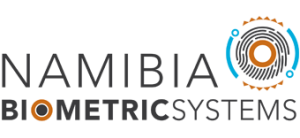Planning for Biometrics Scenarios – Part 3
The previous two articles outlined three main biometric scenarios to plan for such as high security hosting, other Entry Access and Port of entry. In summary so far:
- High security hosting – Mainly concerned with a high volume of people requiring access to a highly secure facility. A master list of authorized individuals is kept and a manual check of each incoming person’s identification (usually a photo ID) is also conducted. It is obvious that the manual checks are challenging even for the highly trained guards to remember every individual on the master list.
- Other Entry Access – Mainly concerned with securing all the entry accesses to the facility including side entrances. Consider a building which has a lobby with a security guard, does it actually require a biometric entry control for the lobby? Or does it depending on the size of the company and the size of the building, the security guard may recognize everyone who has a legitimate need for access.
- Port of entry – Mainly concerned with a high volume of people requiring access to a highly secure facility without the advantages of a master list for authorised individuals. Traditional port of entry system depends to a large degree on how hard it is to modify or create a passport without being detected.
This article focuses on the fourth biometric scenario known as biometrics limitation scenarios. Badly researched biometric solutions are likely to encounter scenarios where the chosen biometrics technology may not be suitable. Biometrics limitation scenarios will present itself sooner or later depending on the size of the user population and how long biometrics has been employed as a solution. There may be situations where the specific biometric been captured doesn’t apply to someone because the required body part is either missing or just doesn’t conform to the parameters that the biometric system expects. It is also common for biometrics to fail even if the required body part or biometric trait is available for a variety of reasons. The problem is that there’s a pretty broad variation across our species, and some measurements make a lot of assumptions that are based on statistical norms. In order to a biometric solution to work effectively and efficiently, it is important to make accommodations for individuals who are not able to use the system.
Researchers at Biometric Research Laboratory (BRL) within Namibia Biometric Systems (NBS) will continue to further highlight the most common use scenarios and some possible pitfall scenarios for biometrics in the next few articles.
More information on the implementation of biometrics based solutions can be requested from info@namibiabiometricsystems.com
